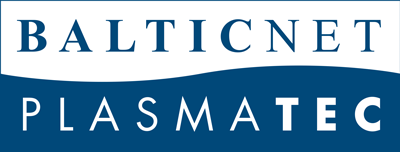University of Latvia
Address
19 Raina Blvd.
Riga, LV 1586
Latvia
Contact
Contact person: Dr Atis Skudra
Phone: +371 6722 5907
Fax: +371 6722 8249
Website

About the University
The University of Latvia named at that time “The Latvia Higher School” was founded on September 28, 1919 on the basis of the former Riga Polytechnic (founded in 1862). In 1923 this school received its now resumed name – the University of Latvia (Universitas Latviensis).
In the period between 1919 and 1940 the University of Latvia was the greatest centre of higher education, science and culture. The former building of Riga Polytechnic in 19 Raina boulevard serves as the symbol of the University even nowadays.
In the pre-war years it was possible to gain higher academic education not only at the University of Latvia but also at the Conservatoire of Latvia and Academy of Arts. The University of Latvia is the first of classical universities in the history of Latvia and follows the slogan “Scientiae et Patriae”.
In the course of time such higher educational establishments as Latvian University of Agriculture, Latvian Academy of Medicine, Riga Technical University separated from the University of Latvia and became well-known centres of education and research.
Institute of Atomic Physics and Spectroscopy
Website: www.asi.lv
Institute of Atomic Physics and Spectroscopy is a multi-disciplinary research division at Faculty of Physics and Mathematics, University of Latvia. Seven groups (laboratories) of the Institute are studying the hottest topics of atomic/ molecular physics and atmospheric/stellar spectroscopy and developing new optical methods/devices for industrial, environmental and medical applications.
Research fields:
- Low-temperature plasma investigations
- High-resolution spectroscopy
- Light source technology
- Plasma/surface interaction
- Inductively coupled discharge
- Capacitatively coupled discharge
- Plasma nanotechnology
The main research area is a non-thermal plasma investigation, application and diagnostics by means of different, mainly, high-resolution spectroscopy methods. The scientific work of the high-resolution spectroscopy laboratory was started in 1973. First, the excitation energy transfer processes in collisions of the second kind between atoms were investigated. The most important study object was the mixture of mercury and thallium. The method of spectral line shape measurements by means of pressure scanned high-resolution Fabry-Perrot interferometer was put into practice and gradually developed. Beginning from 80’s till now, the group deals with the development of high-frequency electrodeless discharge lamps. The investigation and optimisation of these
lamps for use in scientific apparatus was carried out.
On the basis of high-frequency discharge plasma investigations, a new technology of production of high-frequency electrodeless lamps, containing pure rare and other gases (He, Ne, Ar, Kr, Xe, H2) as well as metals Hg, Te, Se, Cd, Bi, Zn, Tl, Sn, Sb, Pb, As, Rb, In and multi-element fillings, like Hg + Cd, Hg + Zn, Hg + Zn + Cd, Se+Te, In+Sb was developed (13 patents). Special attention has been paid to preparation and investigation of electrodeless light sources filled with separate mercury isotope and combined elements for their use in high-precision Hg-vapour analyser and quantum magnetometers. The mercury-argon discharge plasma is under the investigation in order to evaluate the discharge efficiency. The excitation and ionisation of plasma, the spectral line profiles and intensities versus the high-frequency discharge conditions have been studied using time and spatially resolved spectroscopy methods. By the means of mathematical modelling and curve-fitting method of the interferometric data, the discharge parameters and interaction constants have been estimated.
High-Frequency Electrodeless Discharge lamps (HF EDLs) are bright radiators of narrow and intensive atomic and ionic spectral lines, covering the spectrum from VUV to IR. Main characteristics of our HF EDLs are high emitted spectral line intensity, long working time because of lack of electrodes, and, in general, narrow spectral line shapes. By special technology developed in our laboratory we can produce EDLs containing: Sn, Cd, Hg, Zn, Pb, As, Sb, Bi, Tl, In Se, Te, Rb, and Cs, as well as Hg-Cd, Hg-Zn, Hg-Cd-Zn. Se-Te, I2, H2 and noble gases.
Collaborative projects:
- Scientific collaboration agreement with Leibniz Institute for Plasma Science and Technology and University of Greifswald, Germany
- Use of HF electrodeless lamps in atomic absorption spectrometry, scientific collaboration with the University of St. Petersburg, Russia
- Isotope high-frequency electrodeless lamps, scientific collaboration with the Russian Research Center “Kurchatov Institute”, Moscow, Russia
- Theoretical calculations in low-temperature plasmas, scientific collaboration with CPAT, University of Toulouse, France
Recently new efforts were initiated to investigate low pressure non-equilibrium plasmas. Such plasmas have become of growing interest in the field of plasma processing. In particular, emission and absorption spectroscopy (TDLAS) are dominantly applied for the investigation of these chemically active plasmas (collaboration with Prof. J. Röpcke, Leibniz Institute for Plasma Science and Technology, Greifswald).


